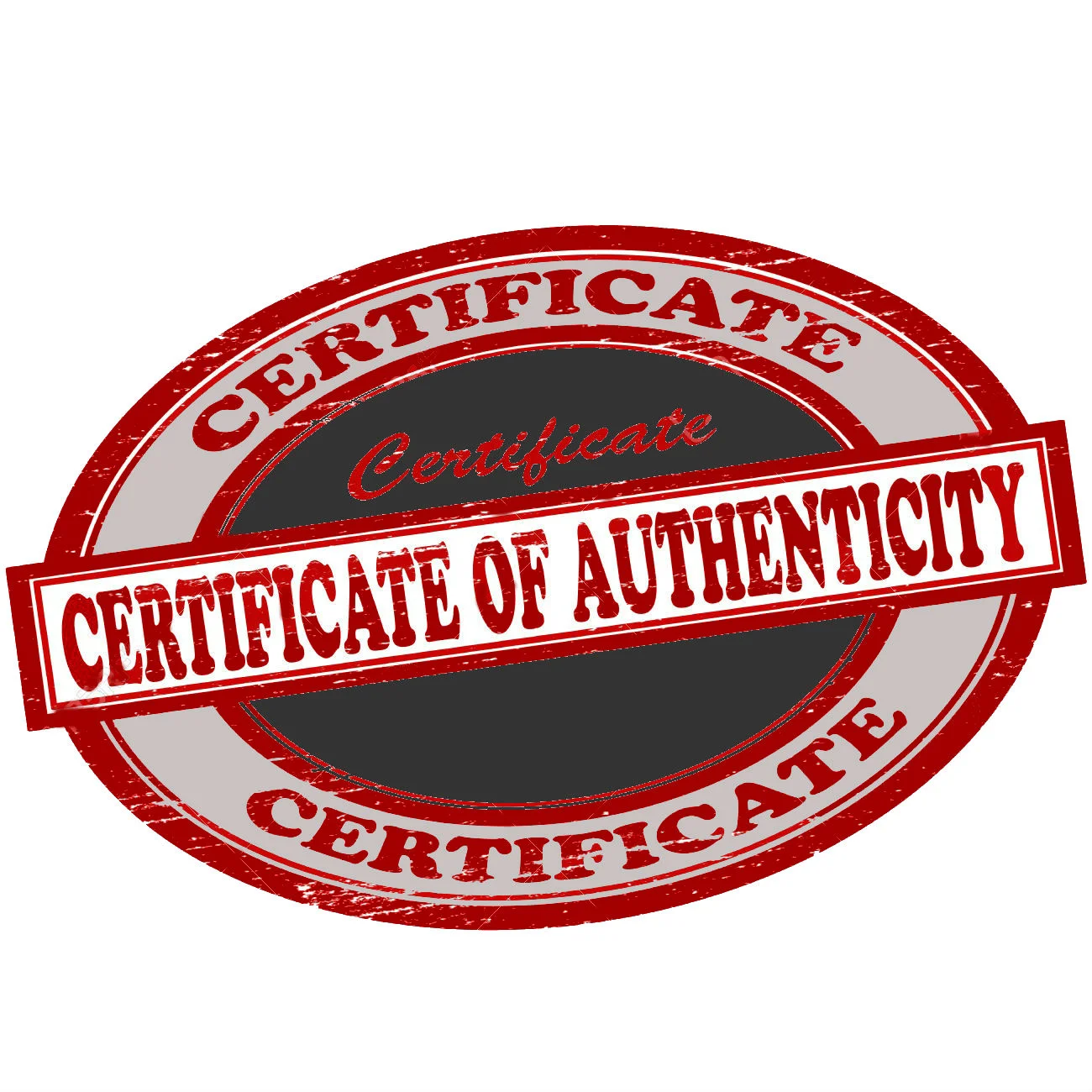Not all Certificates of Authenticity are created equal. In fact, very few of these documents provide the seal of genuineness and added value that they denote. Sure, they often have lovely fonts and graphics on fancy paper, but do not be fooled by their professional look. After having examined a work of art, there have been many instances when owners have presented me with a certificate of authenticity issued by the gallery believing that: (A) what was written on the document, including its value, is true and (B) that having the certificate increases the value of the artwork. More often than not, the certificate can be a nice addition to have but not necessarily a financial benefit to the piece.
What is a Certificate of Authenticity in relation to fine art? Often abbreviated as COA, it is a document that attests to the truth of the facts as stated. It is typically given to the buyer during the purchase of a piece of art. The COA will have specific information about the object or work including (where available): artist, title, medium, date, series/edition, publisher, image size, literary reference, name of retailer, name and signature of issuer, etc.
However, there are no laws surrounding the regulation of these documents. Therefore, the expression “caveat emptor” extends not only to the artwork but to the COA as well. Sadly, some buyers place too much trust in these types of certificates which are easy to forge. All you need is a computer to access a free template online, and you can print a certificate of your very own within an hour or less. Fraudulent COA’s can even be vintage themselves since they have been regularly in existence in the United States since the 1950s. Just because it’s old, doesn’t mean it’s true.
Disreputable sellers have been known to use the COA to elevate a perceived value of art that supposedly wouldn’t exist without it. Galleries on cruise ships are particularly fond of mentioning that a COA accompanies every work of art sold. Yet these COA’s often use ambiguous language in their description that at first glance may indicate authenticity, but in reality, they promise very little. For instance, I have come across more than one “authentic” Picasso print accompanied by a COA bought during a cruise vacation that was actually a book illustration extracted from a monograph.
COA’s will sometimes mention the purchased value of the piece and even an “insurance” value. The insurance value provided is typically two times the purchase price. These values often do not stay relevant since fluctuations in the market can change the current value of an artwork, especially if you plan to resell it several years later. Also, insurance replacement costs usually don’t equate to double what you paid for it. It is best to view the purchase value present on a COA as a useful record of sales history.
The legitimacy of the COA is basically determined by two factors: the content and the source. Does the document have as much detail information as possible? Is the document original (not a photocopy) and hand-signed? Who issued the COA? The artist, the artist’s agent, a well-respected gallery, or a qualified expert are the best individuals to have issue such a document. Unfortunately with today’s litigious environment, few experts are willing to authenticate.
It is also important to note that an appraisal is not a document of authenticity. Unless the appraiser is an established expert on the item being appraised, the report is an opinion of value based on the readily apparent identity of the piece and based on the appraiser’s years of experience and education.
The old adage is true - buy what you like. That way, the dangers of a less-than-reliable Certificates of Authenticity will have minor impact on the enjoyment of your collection of art.
Enjoyed reading? Subscribe to our newsletter.
About the Author: Courtney Ahlstrom Christy is the Principal Appraiser of Ahlstrom Appraisals LLC. She has worked with auction houses, museums, and galleries - all of which have provided unique opportunities to closely examine works ranging from the antique to the contemporary. Her background in the field of decorative arts includes silver, ceramics, glass, and furniture. Courtney also has extensive experience in fine art with a special interest American and European works from the late 19th to early 20th century.
© Courtney Ahlstrom Christy 2016
Ahlstrom Appraisals | Personal Property Appraisals and Art Consultations | Serving Atlanta & Southeast | Fine Art, Antiques & Vintage
